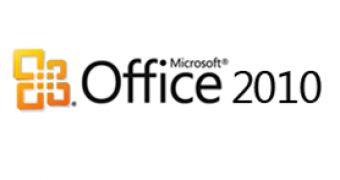Microsoft is standing its ground, defending the decision to use Word 2010 as the rendering engine for Outlook 2010. The Redmond-based company fended off pressure from the Fix Outlook group (backed by the Email Standards Project and Freshview, maker of “email marketing campaign” software) to fix Office 2010.
The software giant first started using Word to render HTML content in Outlook with the 2007 release of the Officer System. Office 2010 simply continues the strategy that Microsoft adopted with Office 2007. William Kennedy, Corporate Vice President, Office Communications and Forms Team, indicated no plans for the Redmond-based company to change the way in which Outlook 2010 would render HTML content in emails.
“While we don’t yet have a broadly-available beta version of Microsoft Office 2010, we can confirm that Outlook 2010 does use Word 2010 for composing and displaying e-mail, just as it did in Office 2007,” Kennedy said. “We’ve made the decision to continue to use Word for creating e-mail messages because we believe it’s the best e-mail authoring experience around, with rich tools that our Word customers have enjoyed for over 25 years. Our customers enjoy using a familiar and powerful tool for creating e-mail, just as they do for creating documents. Word enables Outlook customers to write professional-looking and visually stunning e-mail messages.”
Kennedy argued that the vast majority of end users do not need Outlook 2010 or 2007 to render HTML at the same level as a browser. At the same time, only professional HTML web designers are actually capable of writing content that takes advantage of browser-level CSS support such as CSS floats or CSS positioning. Nevertheless, he noted, all users can take advantage of the extra security provide by Word, in contrast to Internet Explorer, since the Word-rendering engine cannot run web scripts or execute active content.
However, E-mail Standards Project group's Dave Greiner explained that the Fix Outlook initiative was not about making Microsoft turn back to using the IE rendering engine for Outlook 2010. “We are in no way advocating that Microsoft shift from using Word to create or render HTML emails. We’re asking that the HTML produced by the Word engine be standards compliant. This in turn will ensure that the engine will correctly render standards-based emails,” he stated.
According to Greiner, Outlook 2010 does a poorer job at supporting CSS than a product Microsoft released almost a decade ago, Outlook 2000. “It’s important to remember the W3C’s CSS standard was created back in 1996. Not only that, but Outlook 2000 offered fantastic CSS support. The fact that software released 10 years later offers significantly less standards support does not reflect that Microsoft ‘understand that e-mail is about interoperability,’” he explained.
Kennedy had already pledged Microsoft's support for any standard designed to increase user experience. The Redmond-based company is only prepared to work with email client vendors in order to support rich content with Outlook as long as an industry consensus is formed. The software giant's opinion is that one such consensus does not exist yet.
“Microsoft welcomes the development of broadly-adopted e-mail standards. We understand that e-mail is about interoperability among various e-mail programs, and we believe that Outlook provides a good mix of a rich user experience and solid interoperability with a wide variety of other e-mail programs. There is no widely-recognized consensus in the industry about what subset of HTML is appropriate for use in e-mail for interoperability. The ‘Email Standards Project’ does not represent a sanctioned standard or an industry consensus in this area,” Kennedy added.

 14 DAY TRIAL //
14 DAY TRIAL //